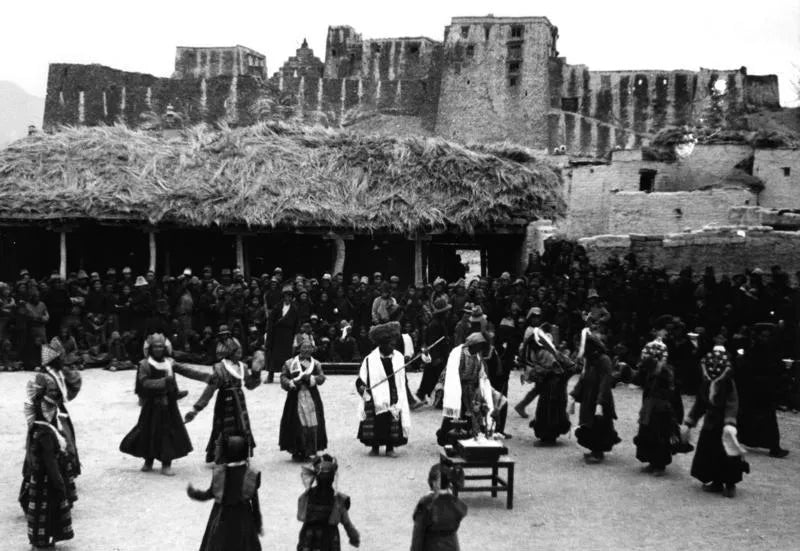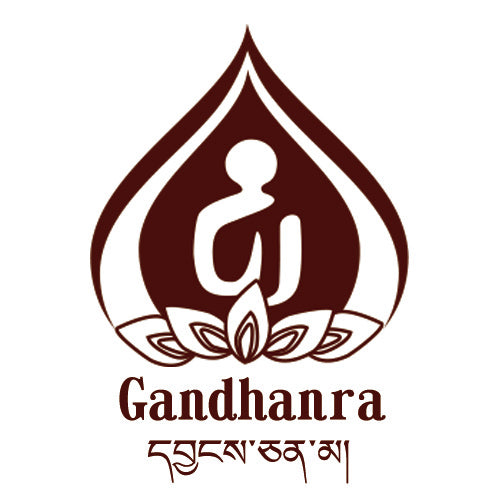
Sacred drama performed in an open-air theater, a brief discussion of the shoton Festival's Tibetan opera.
Tibetan opera is essentially a theatricalized product of biographical literature
The events unfolding on stage are given a real status
Cruel plots are seen as social experiments and philosophical experiences
With the help of the protagonist, we experience the mysteries of concepts
American scholar Kati Fitzgerald
The events unfolding on stage are given a real status
Cruel plots are seen as social experiments and philosophical experiences
With the help of the protagonist, we experience the mysteries of concepts
American scholar Kati Fitzgerald

"Traditional Tibetan Opera Performance in Front of The Gonggar Dzong"
1939, German Federal Archives Collection
1939, German Federal Archives Collection
The love story between the prince and fairy in the confrontation between the kingdoms of Good and Evil, the two half-brothers fleeing the kingdom and ultimately inheriting the throne, the resurrected virtuous woman seeking revenge and justice, the selfless prince enduring exile, the Tibetan king marrying two princesses with the help of his ministers, the challenges faced by the siblings left by the mother, the virtuous woman forced into palace intrigue and eventually finding salvation, the merchant and his illegitimate son showing wisdom and miracles after being framed – these are the plot summaries of the eight core traditional Tibetan opera scripts. The Tibetan opera scripts, situated between religious classics and oral literature, were the most important ideological carriers in classical Tibetan society, expanding through interactions between playwrights, religious scholars, performers, and audiences, weaving together dreams of karma and indigenous philosophical scenes in open-air theaters.

"The God of Drama: God of Joy," image from "Complete Collection of Tibetan Buddhist Deities"
Theoretical drama from South Asia and indigenous biographical literature have had a significant impact on Tibetan theater scripts. Apart from "Baima Wenba" inspired by the worship of Padmasambhava, "Princess Hanini" influenced by the worship of Guan Yin and the history of Buddhist empires, and "Langsa Wenbang" inspired by local female folk biographies and the worship of the mother goddess, the remaining five Tibetan theater scripts are related to Jataka tales or the stories of Buddha's past lives. Dingqin Ciren Wangdui(སྡིངས་ཆེན་ཚེ་རིང་དབང་འདུས་), a government official during the Ganden Podrang period, is considered a pioneer in the formalization of Tibetan theater scripts. However, it is important to note that this formalization reform focused on localizing storylines and contextualizing stories in Tibetan settings. This is why scholars today have controversial views on the origins and structures of the "Eight Great Tibetan Operas," including both formal scripts and original short stories.

"Eleven-faced Avalokitesvara Bodhisattva", 12th century, Collection of the Rubin Museum.

Partial image above: Zanpu and Second Princess.

"Biography of Padmasambhava", 18th century, private collection
It is simplistic to assume that Tibetan opera stories solely originate from local folk tales and are framed within Buddhist scriptures. Such a conclusion does not seem to align with the original form of Tibetan opera scripts; this conclusion would classify the story of "The Prince of Norsang" as a local folk tale from the current Qu Shui County area, or the story of "Zho Wa Sangm" as a folk tale from the Dazhang area. In contrast, some scholars persist in tracing the origins of Tibetan opera scripts back to South Asia, aiming to interpret the Buddhist concepts layered in the later stages of scriptwriting as essential to Tibetan opera scripts. When it comes to the above two theories, it is best to integrate and narrate them, namely that the framework of Tibetan opera scripts draws inspiration from South Asian or Central Asian Jataka stories and biographical drama traditions, continuing the performance styles and theories inherited by the Buddhist community from South Asian Sanskrit drama and regional drama. However, the aesthetic consciousness and key plot points of the scripts are filled with Tibetan customs and ethical relationships.
If we carefully observe the language style, dialog strategies, and ethical roles of characters in Tibetan opera, the origin of Tibetan opera scripts as mentioned above will be more fully displayed. Aside from the three Tibetan opera scripts purely based on local literature and folk creativity, the other five opera scripts related to Jataka tales also show traces of a local perspective: the court literature and royal intrigue of the Tubo period, religious sacrifices and female practitioner groups in the early post-spreading period, the elderly men and women portrayed as comic characters and evil subjects, and the complex system of ghosts and monsters.
If we carefully observe the language style, dialog strategies, and ethical roles of characters in Tibetan opera, the origin of Tibetan opera scripts as mentioned above will be more fully displayed. Aside from the three Tibetan opera scripts purely based on local literature and folk creativity, the other five opera scripts related to Jataka tales also show traces of a local perspective: the court literature and royal intrigue of the Tubo period, religious sacrifices and female practitioner groups in the early post-spreading period, the elderly men and women portrayed as comic characters and evil subjects, and the complex system of ghosts and monsters.

"The Biography of Lansawen Bao," 19th century, private collection

Partial image above: The couple have a son.

Partial image above: The female protagonist brings the dead back to life.

